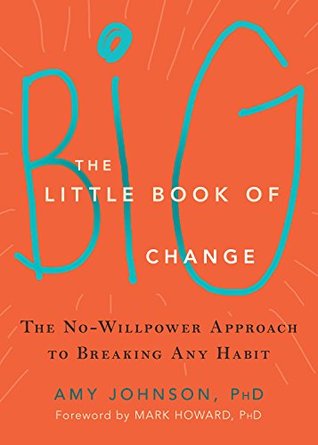More on this book
Kindle Notes & Highlights
by
Amy Johnson
Read between
February 4 - December 16, 2019
8: All Thought Is Temporary and Fleeting
your thinking determines what you experience in each and every moment. You will see that this is true if you look at how personal and subjective our experiences are.
9: Willpower Is the Wrong Tool
What Is Willpower? Willpower is more thinking. Willpower is after-the-fact thinking that attempts to trump your original thinking.
Ironic Monitoring Process because—quite
A third flaw in the willpower approach is that because willpower requires so much energy and focus, your ability to use it is inconsistent.
you. When we’re
Freedom comes from seeing a new truth.
10: All Thoughts Fade
urges are habitual, emotional thought.
no matter how strong an urge might be—no matter how insistent the inner lizard may sound and no matter how many urges it might toss your way—your lower brain alone is completely powerless to enforce it. You have wisdom that you can learn to call on in any moment, regardless of what your brain is doing.
Neuroscientists refer to the ability to veto any thought that occurs to us as free won’t.
In that sense, that armless, legless lizard with a megaphone is a lot like a stray cat. The more you feed it (by respecting what it says, obeying it, and trying to reason with it), the more it comes around.
11: When You Don’t Give In to Urges, Your Habit Changes
part II: Ending Your Habit
In her book Steering by Starlight, Martha Beck (2008) talks about how the inner lizard has predictable stories that you can easily spot, which helps tremendously in viewing them as “neurological junk” that is safe to dismiss (Hansen 2011).
When you know what your lower brain says on repeat, you know what to dismiss. Consider making a note for yourself of your inner lizard’s favorites.
13: There Is Power in the Pause
The first is the pause taken consciously and purposely. When you feel an urge rising up, or you find yourself engaging in behaviors that tend to precede your habit, you decide to pause before you do anything more.
The other kind of pause tends to occur more naturally and effortlessly, almost by default. When you see something deeper about the urges you experience, leading you to view them as habitual thought rather than meaningful or powerful messages, you pause automatically. This type
Sometimes you follow wisdom, and sometimes you turn away from it. All that truly matters is that you see that wisdom is there for you. The more you learn to rely on it, the more you will naturally find yourself guided by it.
That choice—and the release of tension that came as her urge began to fade—was exhilarating for Marianne. It was for me too. I remember dismissing my urges to binge and feeling so excited and proud of myself, knowing that my choices were physically changing the landscape of my brain.
14: There Is Nothing You Must Do
When you’re given a diagnosis like I was—or you come to think of yourself as a “gambler” like Mario did, a “hoarder” like Marianne, a “worrier” like Valerie and Jeremy, or an “insecure codependent who needs constant reassurance from a partner” like Jackie—you lose sight of the fact that your habit comes and goes. It begins to feel like the habit is a stable part of you, always there, albeit sometimes in the background.
15: Understanding Thought Changes Everything
along, or even remind yourself incessantly that they are “only thought” or that “it’s all temporary,” when they feel anything but. This seems helpful on the face of it, but it is another way we innocently imbue vaporous thought with attention
part III: Lifelong Change
There will be a day when your habit is no longer on your mind.
That won’t mean you are immune from ever stumbling back into your habit; it just means that things will feel different. The shift will feel substantial, as if your foundation has changed.
Not surprisingly, one of the top reasons smokers continue to smoke was my concern exactly—cigarettes are their pathway to peace and relaxation.
it is important to know that a large portion of the relaxation and pleasant feelings that come from your habit—no matter what your habit is—is the release of the tension created by the urge. That
Although it looks like your habit creates positive feelings, it actually creates uncomfortable feelings (urges) and then shows you how to relieve that pain.
17: Setbacks Are Meaningless


